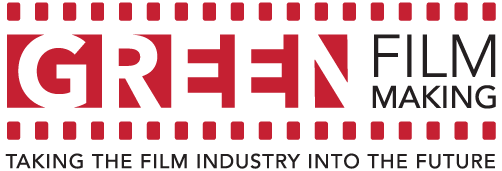
Production
Green filmmaking starts in pre-production. At this stage you set your sustainability goals, make contact with green vendors and you discuss the sustainability plans with the crew. Do not forget to ask for their input. Working sustainably depends on good cooperation and preparation. All tips and tricks listed for the different departments could as well be listed here. Preproduction is the best moment to incorporate sustainability in everyone’s planning. It is smart to hire a special eco-manager for this purpose, who can take responsibility to safeguard sustainability for the whole production process. Els Rientjes can help you with that. This position can be combined with the new Covid manager, as many tasks overlap.
During production, it is important to continue to motivate the crew. After production is finished you check if your sustainable goals were met. Communicate the successes to the crew, this will be inspiring to start the next production with the newly acquired sustainable knowledge.
Tips & Tricks
General points:
- Reduce paper consumption / recycle
- Work digitally, share documents through Dropbox, Google Drive, or on your own server
- Reduce energy use
- Reduce use of materials / re-use
- Public Transport / Carpooling / promote driving electric
- Encourage waste sorting
- Encourage organic or (partially) vegetarian catering
- Encourage digital communication
- Invent local solutions to save on transport distances
- Foster long-term relationships
- Share knowledge / innovation
Use the call sheet
Via the call sheet you can easily give regular updates on (succesful) sustainable objectives. You can also share ‘green tips’.
Finance
- Compare banks on various themes related to sustainability and fair trade, through the Fair Bank Guide.
- Choose a bank or investor who shares your sustainable ideals. Overall Triodos and ASN Bank have scored well.
- Use the Switching Service to change banks or see what possibilities a bank offers. Both ASN Bank and Triodos offer a free switching service.
- Look for possibilities outside of the film industry. Many municipalities in The Netherlands support entrepreneurs with green ambitions. Maybe it is possible to get financial support to make your office more sustainable.
- Dare to think (commercially) about things like sponsorship and product placement with parties who promote fair trade, sustainability and environmental awareness. In Hollywood Green Product Placement is a well known player. Think about why a green investor should partner with you.
- And remember: Green is Cash! It pays to save on energy, CO2 emissions and raw materials because that ultimately makes you work more efficient and therefore cheaper.
Pre-production
- Think about parties with whom you work or want to work. Are they also concerned with sustainability?
- Ask your vendors explicitly about sustainable possibilities and let them be incorporated into a quote. The greater the demand from producers, the quicker vendors will move to invest in sustainable options.
- Schedule 1 or more (digital) meetings with the heads of department to jointly determine which sustainability goals can/must be achieved in your production. Make them responsible.
- Make sure all departments communicate together to combine services such as transport.
- Start talking to crew members about sustainability. Explain why this is important.
- Formulate easily achievable goals and agreements. Put them down in writing if possible (ex: a possible target: After production 75% of trips were carpooled).
- Appoint a special sustainability manager who is responsible for achieving these goals, keeps track, offers support and ensures that everything runs smoothly.
- Evaluate these goals and commitments regularly; is everything still going to plan?
Office
- Try to avoid a ‘paper trail’. Send invoices, schedules, briefings and the like by mail.
- Still needing to print? Use paper that is recycled at least 30%, print double-sided and choose the option “eco printing” if your printer supports it.
- Look at www.ecofont.com for alternative ways to save ink.
- A budget alternative is use the font Times New Roman. It will cost relatively the least ink of the standard fonts.
- Use refillable cartridges.
- Print signage on paper or other biodegradable material, instead of plastic.
- Use compostable disposable cups or buy used mugs or cups at the flea market/second hand shop.
- Is lunch being prepared at the office? Introduce a special veggie day or offer a vegetarian option each day.
- Place beehives on your office roof and eat your own honey at lunch. This can be combined with a sedum roof that will ensure better isolation and a lower electricity bill.
Energy
- When planning a shoot, try to plan as many daylight hours as possible.
- Be energy efficient by using LED lamps and not leave lights on unnecessarily.
- Choose a web hosting provider that has sustainability high on the agenda, like Green Host.
- Try to configure computers and laptops as energy efficient as possible.
- Remove plugs from sockets when not in use. This slumber energy can make a lot of difference.
- Use energy suppliers that provide green electricity and gas. Check this ranking compiled by Greenpeace.
- Try not to use air conditioning but fans instead.
- Check the possibilities to install solar panels on your office roof.
- Check our Film Harvest Map for sustainable energy sources close to your set on location.
Post-production
- Involve post-production in your planning from the preproduction phase. A lot can be gained by checking before production which things can be easily taken care of in post and which thinks are better to built on set. This saves time and money.
The post-production house Filmmore developed an innovative app to make the production process more efficient. Watch the video below
